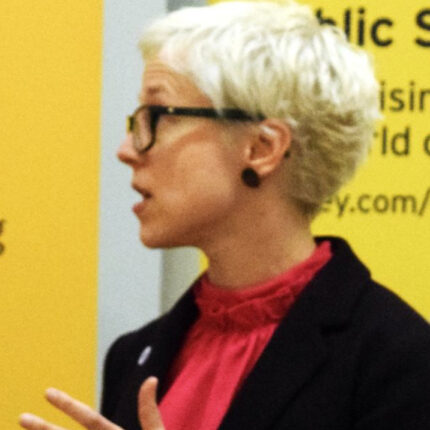The need for digital transformation across higher education is a well trodden argument: we live in an increasingly digital world; students (and academics and professional services staff) are likely to be digital natives who do their shopping online, send their mums mothers day cards via their phones and meet their dates via an app.
So they expect their education, research and day to day work life to be digital just the same. Not to mention that technology can reduce the cost of services and improve performance.
The government’s ed tech strategy has been met with plenty of cynicism, not least in a recent article from Wonkhe’s David Kernohan. The avalanche of ed tech has not yet engulfed the university sector. But fast forward – maybe five, maybe ten, maybe fifteen years – and the sector will inevitably be more digital.
But “digital” is wooly – how can we know where to start? We can look to those universities who are doing pieces of digitisation, and we can look to other areas in the public sector and university systems across the world for a sense of some of the most likely trends. Here are five I expect to see deployed much more routinely across the sector over the coming years.
Robotic process automation (RPA)
Where processes are repetitive, time consuming, subject to peaks and troughs and prone to error, RPA can have a dramatic impact on cost, error rates and speed. In higher education, which operates on a termly and a yearly cycle, there are times of year that are particularly painful for administrative staff: clearing; onboarding new students; onboarding new staff; processing overseas student visas; and administering exams. Not to mention more back office tasks like finance processing. Of course RPA cannot completely replace people: humans are needed to check, problem solve, and provide human advice to humans. But it can reduce errors, improve performance, speed up processes and reduce costs. In the last few years, universities in Australia have adopted RPA, as have one in ten local councils and numerous hospitals.
Chatbots
Many customer-facing organisations have chatbots to help people solve their problems online. Of course – you are rarely “talking” to a real person – they are automated, usually using a combination of clever programming and machine learning. Chatbots are mainstream in the private sector in the UK – just log on to any bank website. We are beginning to see chatbots used in the public sector too, for example in Transport for London and across social care. And universities are starting to use them too, with Leeds Beckett and Staffordshire both deploying them to aid the student experience.
Data analytics
Everyone has heard the tales of how banks can predict who will divorce based on credit card spending, and online retailers who congratulate you on your pregnancy before you’ve told your family. In local government, councils are using the power of big data to predict homelessness, target early interventions and rigorously analyse their impact. Analytics can be used to similar effect in learning: to predict students at risk of dropping out, identify students who might need additional support, spot areas of the curriculum that many are struggling with, plan future demand for courses, and even understand and predict the need for learning resources or campus services.
Artificial intelligence (AI)
AI is being used across the public sector, for example the Department for Work and Pensions uses it to identify benefits fraud. There are already any number of programmes that scan essays for previously used phrases to identify possible cases of plagiarism. Artificial intelligence has other uses too: to learn about students’ preferences and tailor their learning journeys to their needs, or to support (not replace) exam marking.
Online collaboration
Online learning is well established, and has already revolutionised access to higher education. Collaboration technology will continue to have a profound impact on the different ways in which students and academics; researchers and collaborators can work together. For example, students can use the Open University’s telescope from anywhere in the world, and normal people across the world are starting to contribute to citizen science.
The technology of the future university is here already; it is being deployed, just not universally. In five, ten, or fifteen years, we should expect those technologies above to be widely used in higher education. Until then, there is competitive advantage – better student experience, cheaper services, better use of academic time, better learning outcomes – to be gained by those universities who get ahead of the game.














I remain skeptical. At least blockchain didn’t make it to this piece.
Measurement of student performance indicates that much tech has a negative effect, e.g., videos of lectures, electronic note taking.
I would suggest what may occur is we teach how to use tech, but without using tech as a prop.